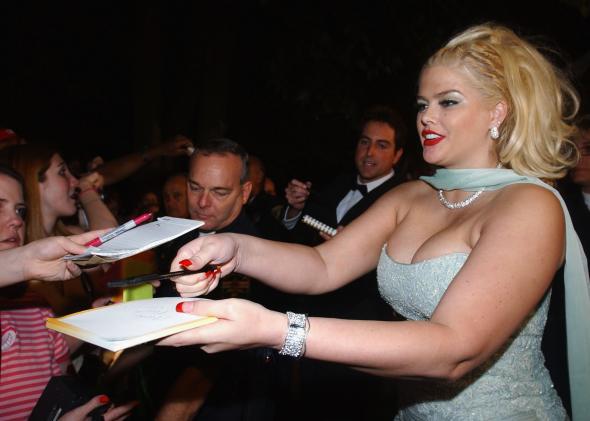With a successful production of the opera Anna Nicole finishing up last Saturday night, many in New York and around the country are today mourning what appears to have been the final curtain call for the New York City Opera. The venerable 70-year-old company, having fallen well short of raising the $7 million needed to save the current season by an Oct. 1 deadline (part of the emergency fundraising campaign played out on Kickstarter), will file for bankruptcy and begin closing procedures this week. In an email to subscribers, current general manager and artistic director George Steel recalled the company’s much-beloved history as “The People’s Opera”:
New York City Opera has introduced generation after generation of young singers who are stars in the making, brought the public exciting new works and compelling, fresh interpretations of classics, acted as a champion for American composers and performers, and ensured that every New Yorker can experience the live art of opera.
With ticket prices that were often relatively affordable (in recent years, special tickets went for $25), the NYCO was certainly more accessible to many opera-goers than pricey rivals like the Metropolitan Opera. But accessibility does not necessarily pay the bills, and after the company left its tony home at Lincoln Center in 2011 for a nomadic, theater-to-theater existence to save money and be closer to the middle- and working-class people it was meant to serve, the daring business model never seemed to stabilize. That’s a shame, not only because the NYCO was a fine producer of opera, but also because it was especially beloved by many in the gay community.
Over on HuffPo Gay Voices, author Perry Brass has a moving remembrance about a dear friend who was both an avid supporter of the NYCO and, later, a victim of the AIDS epidemic. Along the way, Brass describes how central the NYCO shows were as a social space for gay men during the decades just after Stonewall:
Many of my friends were culture vultures, and culture, high culture, nosebleed high, was being made here. … The Metropolitan Opera, across Lincoln Center’s plaza, was stupid. It was stodgy. It was fat, old people with fat, old money. At the New York State Theater you saw hot guys in full leather gabbing about Bev’s Violetta in La traviata, or Samuel Ramey’s naked chest in Boito’s Mefistofeles. You met your friends there at intermission, sometimes a dozen of them. There were no cellphones, so you talked to people. Opera was high art that sometimes dickered with the dirt, but it had to remain high. It was where kings and the common people mixed, under the eyes of Phoebus Apollo, god of light and music.
Like Brass’ friend, many of these men passed away—but if they had survived, might the opera have as well? It’s a provocative question, and unfortunately the sort that can’t be answered. But what’s clear is that the gay community’s love of the NYCO did not go unreciprocated. As Brass mentions, a 1991 production of La Traviata had Violetta die of AIDS instead of consumption in the midst of the ongoing crisis, and an opera depicting the life of Harvey Milk was mounted in 1995. More recently, George Steel’s administration seemed to be trying to appeal to the gay sensibility again with campy and moving melodramas like Rufus Wainwright’s Prima Donna (2012) and, of course, Mark-Anthony Turnage’s just-closed Anna Nicole.
Perhaps, as Brass fears, younger audiences just aren’t interested in the artistic spectacle or the unique social mixing space that opera offers anymore; then again, at the Prima Donna performance I attended last year, the hall was filled with young gay men. While we couldn’t keep the company alive, we will surely miss it terribly.
